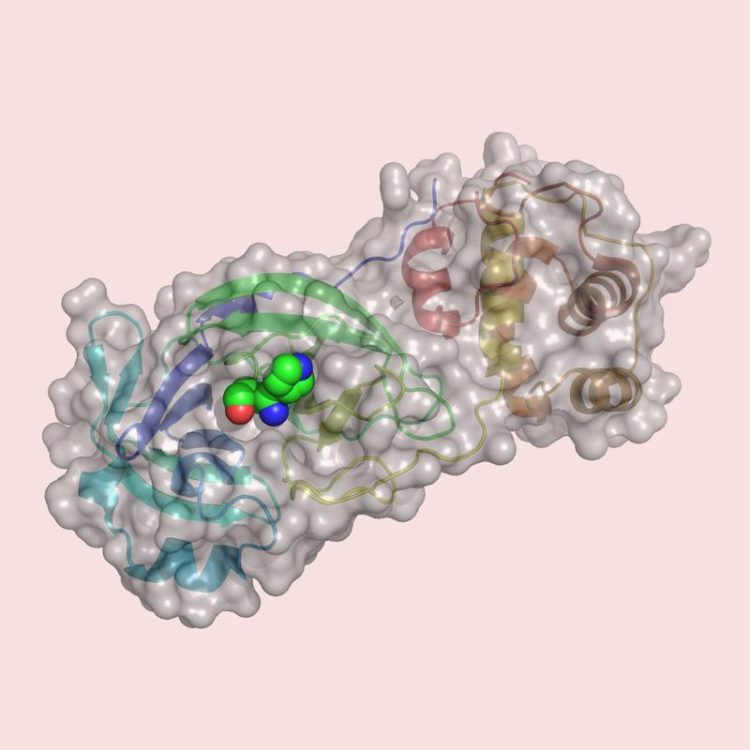Virtual screening for active substances against the coronavirus

Researchers have tested more than 680 million substances on the computer to virtually test one of the virus’ important proteins, the central protease. Picture: University of Basel, Computational Pharmacy
Over the past few weeks, the research group in the Department of Pharmaceutical Sciences, led by Professor Markus Lill, has been working with computer-aided methods to identify possible new drugs to combat the current coronavirus outbreak and similar epidemics in the future.
In the process, the researchers have tested, albeit virtually, more than 680 substances on one of the virus’s key proteins: its central protease.
This “virtual screening” has already identified several interesting substances that have the potential to inhibit the virus’s critical enzyme – and thus its further multiplication.
“Even if the complete development of a drug to fight this particular coronavirus is likely to exceed the duration of the current epidemic, it is important to develop drugs for future coronaviruses. This will make it possible to nip health crises like this one in the bud in the future,” says Lill.
Test results made public
In light of the current crisis, the group took an unusual decision by immediately making the test results publicly available in the form of an open-source preprint. The publication was consulted more than 3,000 times during the first 48 hours alone.
The Basel researchers hope that a larger number of research groups worldwide will test their proposals on the virus and initiate further trials. Normally, when it comes to drug design, the molecules of interest would be experimentally tested with other groups before the results were patented and published.
The main focus of other ongoing coronavirus trials is currently on the usability of existing antiviral drugs or the realignment of other drugs.
Prof. Dr. Markus A. Lill, University of Basel, Department of Pharmaceutical Sciences, Computational Pharmacy, tel. +41 61 207 61 35, email: markus.lill@unibas.ch
André Fischer, Manuel Sellner, Santhosh Neranjan, Markus A. Lill, and Martin Smiesko
Inhibitors for Novel Coronavirus Protease Identified by Virtual Screening of 687 Million Compounds
ChemRxiv (2020)
https://chemrxiv.org/articles/Inhibitors_for_Novel_Coronavirus_Protease_Identifi…
Media Contact
More Information:
http://www.unibas.chAll latest news from the category: Life Sciences and Chemistry
Articles and reports from the Life Sciences and chemistry area deal with applied and basic research into modern biology, chemistry and human medicine.
Valuable information can be found on a range of life sciences fields including bacteriology, biochemistry, bionics, bioinformatics, biophysics, biotechnology, genetics, geobotany, human biology, marine biology, microbiology, molecular biology, cellular biology, zoology, bioinorganic chemistry, microchemistry and environmental chemistry.
Newest articles

Bringing bio-inspired robots to life
Nebraska researcher Eric Markvicka gets NSF CAREER Award to pursue manufacture of novel materials for soft robotics and stretchable electronics. Engineers are increasingly eager to develop robots that mimic the…

Bella moths use poison to attract mates
Scientists are closer to finding out how. Pyrrolizidine alkaloids are as bitter and toxic as they are hard to pronounce. They’re produced by several different types of plants and are…

AI tool creates ‘synthetic’ images of cells
…for enhanced microscopy analysis. Observing individual cells through microscopes can reveal a range of important cell biological phenomena that frequently play a role in human diseases, but the process of…





















